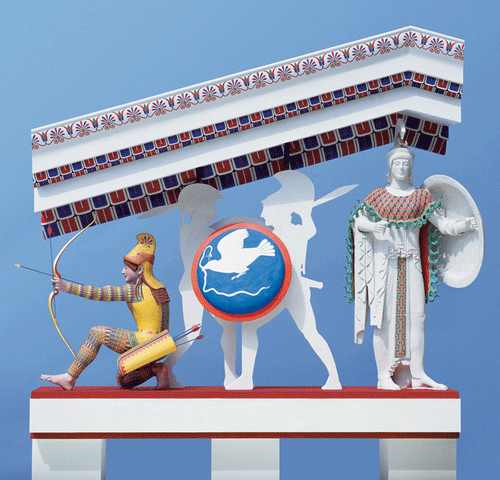August 24, 2010
Gods in Color

Last February, I blogged about a museum exhibition whose subject was how ancient sculpture was a colorized affair. Today I came across an article that flushed out more information about the person who pioneered research in this direction, German archaeologist Vinzenz Brinkmann. The print version of the article is here. A snippet:
A few weeks later, I visited the Brinkmann home, a short train ride from Munich. There I learned that new methods have greatly improved the making of sculptural reproductions. In the past, the process required packing a statue in plaster to create a mold, from which a copy could then be cast. But the direct application of plaster can damage precious color traces. Now, 3-D laser scanning can produce a copy without contact with the original. As it happened, Brinkmann's wife, archaeologist Ulrike Koch-Brinkmann, was just then applying color to a laser reproduction of a sculpted head of the Roman emperor Caligula.Posted by Dennis at August 24, 2010 2:17 AMI was immediately taken by how lifelike Caligula looked, with healthy skin tone?no easy thing to reproduce. Koch-Brinkmann's immediate concern that day was the emperor's hair, carved in close-cropped curls, which she was painting a chocolaty brown over black underpainting (for volume) with lighter color accents (to suggest movement and texture). The brown irises of the emperor's eyes were darkest at the rim, and the inky black of each pupil was made lustrous by a pinprick of white.
Such realistic detail is a far cry from the rendering of Paris the archer. In circa 490 B.C., when it was sculpted, statues were decorated in flat colors, which were applied in a paint-by-numbers fashion. But as time passed, artists taught themselves to enhance effects of light and shadow, much as Koch-Brinkmann was doing with Caligula, created some five centuries after the archer. The Brinkmanns had also discovered evidence of shading and hatching on the "Alexander Sarcophagus" (created c. 320 B.C.)?a cause for considerable excitement. "It's a revolution in painting comparable to Giotto's in the frescoes of Padua," says Brinkmann.
Leave a comment